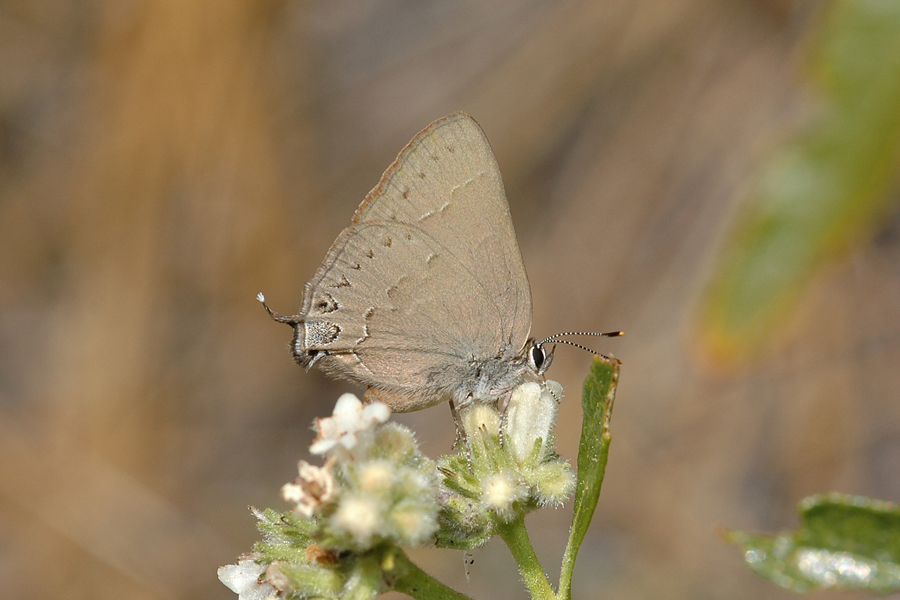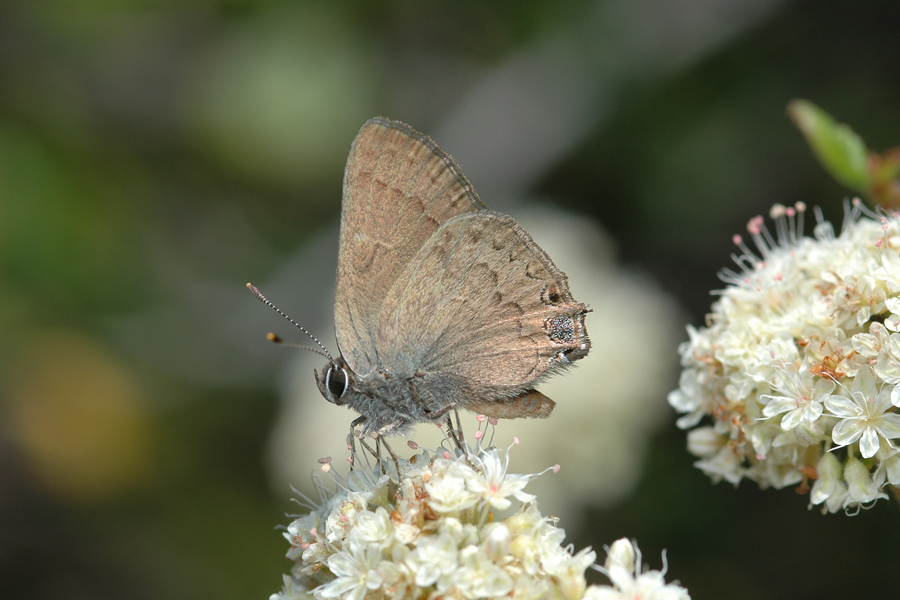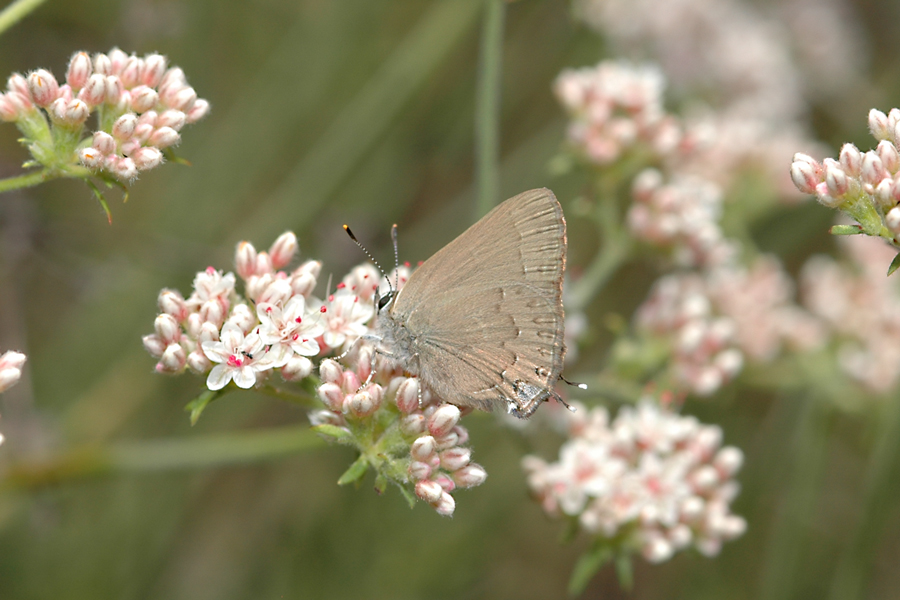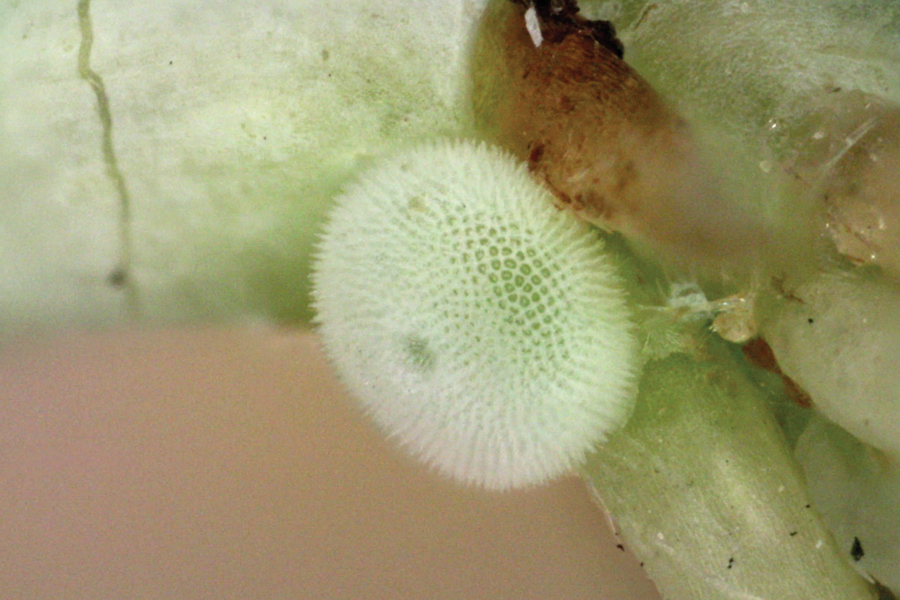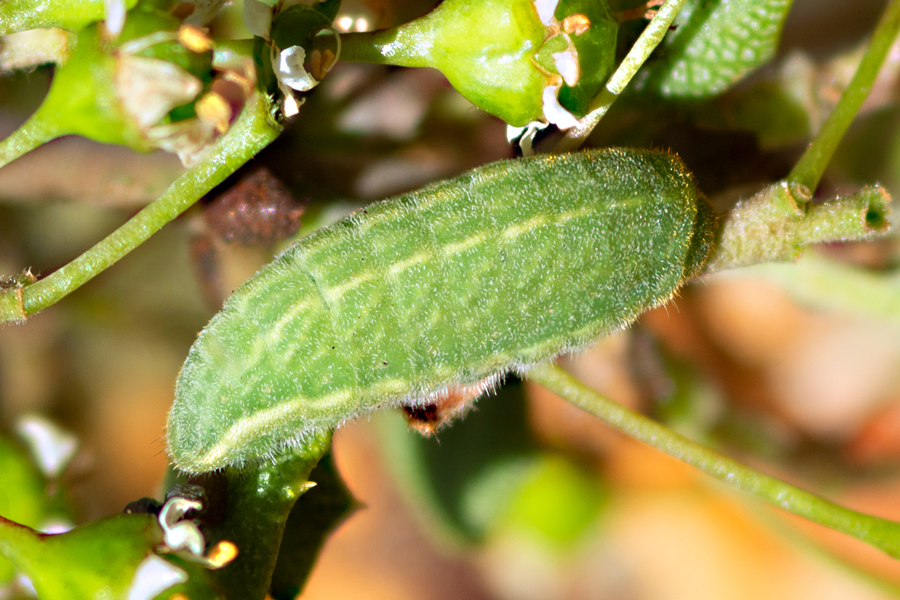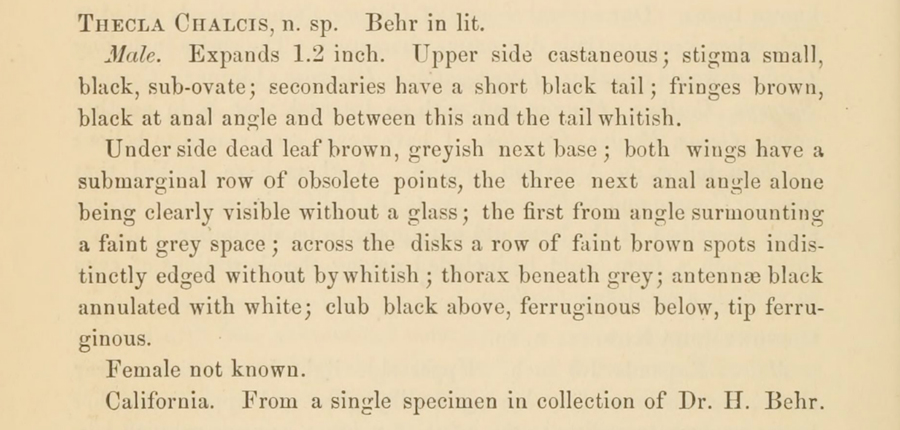Satyrium saepium chalcis
Bronzed Hedgerow Hairstreak
This hairstreak is fairly common in southern California chapparal habitats away from the coasts and northern deserts where host Ceanothus species do well. In fact, chalcis may be found in any southern California county except Imperial. The other three saepium subspecies here have limited ranges. This hairstreak could be confused with the less-common gold-hunters hairstreak or perhaps the golden hairstreak. A distinguishing feature of saepium is the relatively bold markings on the ventral side, including dark lines usually edged with white scales. Gold-hunters also has an orange spot just above the vein leading to the tail. The larvae feed on Ceanothus flowers and adults emerge in a single brood in the early summer. According to Gordon Pratt, overwintering is in the egg stage, with a fully-formed first instar larva remaining in the egg, presumably until the plant flowers in spring.
Nominate saepium was named by Boisduval in 1852 based on specimens collected by Lorquin. The Emmels and Mattoon, in Systematics, pp.9-10, disagree with Brown and Opler (1970; see below) re. the likely locality. They describe S. saepium saepium as typical of those found "at low to mid elevations on the west slope of the Sierra Nevada." It is described as showing "medium contrast of the dark markings of the underside, with a small amount of white scaling bordering the distal edge of the postmedian line." The underside of chalcis "tends to be a uniform dull purplish to blackish brown, and the postmedian dark line tends to be poorly defined." Apparently Wm. Henry Edwards thought the single male specimen he saw in Behr's collection was a species different from saepium. He named it and gave a type locality of "California". This was restricted to "Isabel Creek, Santa Clara County" in the 1970 Brown and Opler paper.
One thing to note about chalcis is that it tends to be what Brown and Opler called "low contrast", in that the ventral ground color is fairly uniform. In subspecies caliginosum and chlorophora there is a contrast between the dark basal area and the outer third in most individuals.
